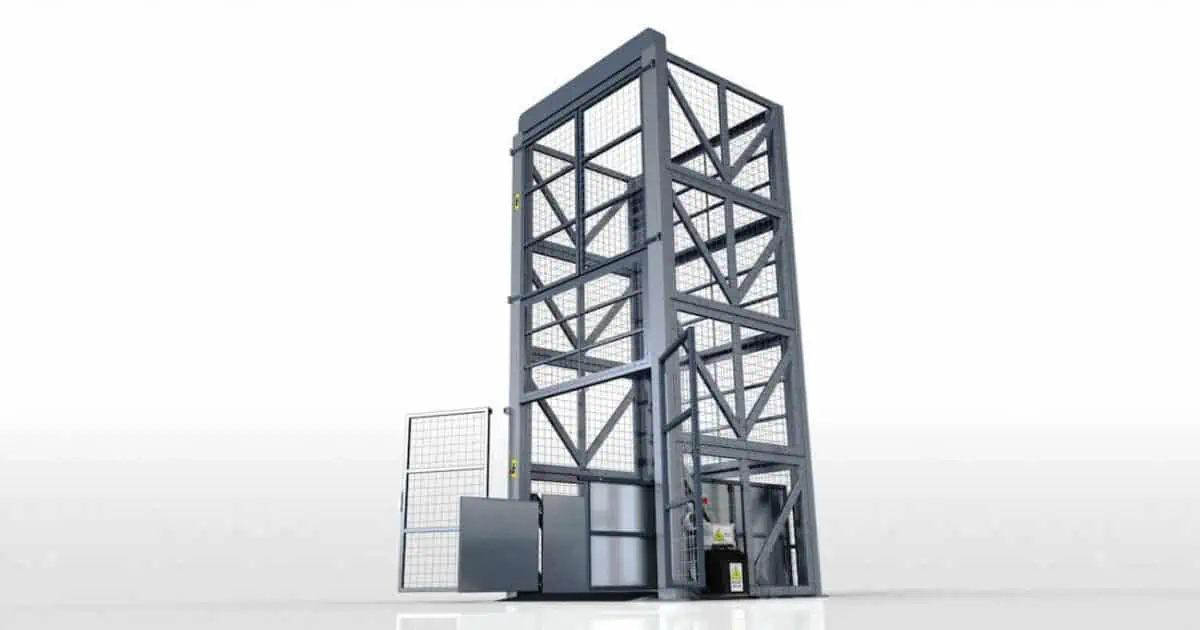Does your commercial unit, warehouse or retail space have a mezzanine floor space languishing unused or, at best, just becoming a dumping ground for unused equipment due to access and safety issues? A Mezzanine Floor Lift could be the solution to safely revolutionise access and usability of a mezzanine or upper building level.
Perhaps you have an existing mezzanine but don’t feel it can be accessed safely, so it’s not able to be utilised to its full potential, and you are relying on standard lifts, stairs or conveyors, which are unwieldy and not practical for the goods and equipment you need to move?
A mezzanine floor lift will enable you to streamline your premises and ensure you meet the required manual handling at work legal requirements and the Health and Safety at Work Act. Most importantly, it will enable staff to lift heavy, awkward or bulky loads more safely. Goods can be moved in one movement onto the mezzanine floor lift and then raised or lowered quickly and smoothly between floor levels.
Operational safety must be a priority, reducing or removing entirely the need to manually handle goods onto conveyors or generic lift facilities. A dedicated mezzanine goods lift will protect the goods and reduce the risk of injury and accidents.
Mezzanine floor lifts can carry safe working loads of 1 to 1.5 tonnes, making them highly suited to pallet, box or loose product or equipment movement between levels efficiently and without risk to the workforce.
Reduced traffic to achieve the same results
Mezzanine floor lifts are designed to safely transport goods between levels, giving more accessible and efficient access to mezzanine levels. You will reduce the vehicle traffic needed to load and unload goods moving between floors.
Reducing the number of forklifts around loading sites will improve safety for the workforce and better protect the goods or equipment being moved. A goods lift facilitates single-person operation and loading roll cages and loose or palletised items without manual handling.
Bespoke sizing for your mezzanine goods lifts allows you to accommodate the goods you need to move, whether a single pallet, multiple pallets or roll cages. They can be manufactured to suit your specific needs. Featuring a compact footprint and the means to fit inside or outside a building, this means space is not an issue.
Variable ramp lengths and same, opposite or through loading gates enable the lift to be positioned to take advantage of workflows, safety considerations and ease of product loading.
Lift sides can be tailored to the optimum height to remove the risk of goods falling off platforms, over sides or becoming displaced and causing breakages and protect workers around the lift site as goods will be safely contained and secured within the lift cage.
Improved efficiency improves safety
Greater efficiency reduces the need for speed. Goods can be moved at the safest maximum speed, securely and without coming to harm without excessive labour requirements. By reducing the manual human resources required to move goods between levels, you will be less likely to create opportunities for accidents and injuries to occur.
A mezzanine goods lift will lower the reliance on moving vehicles to move goods, reducing operating costs and improving flexibility in how the upper levels of your building are used. Manually handling items up and down stairs, especially when heavy and bulky, is dangerous.
Using forklifts creates a mix of people and humans that can end in disaster. HSE statistics show that falls from height or being struck by a moving vehicle are the highest cause of fatal injury in the workplace, and manual handling is responsible for over 20% of the 500,000 plus non-fatal injuries in retail, warehouse or commercial multi-level operations.
A mezzanine goods lift is sealed and safety railed to leave no space for products or personnel to fall to ensure a safer and more productive working environment.

